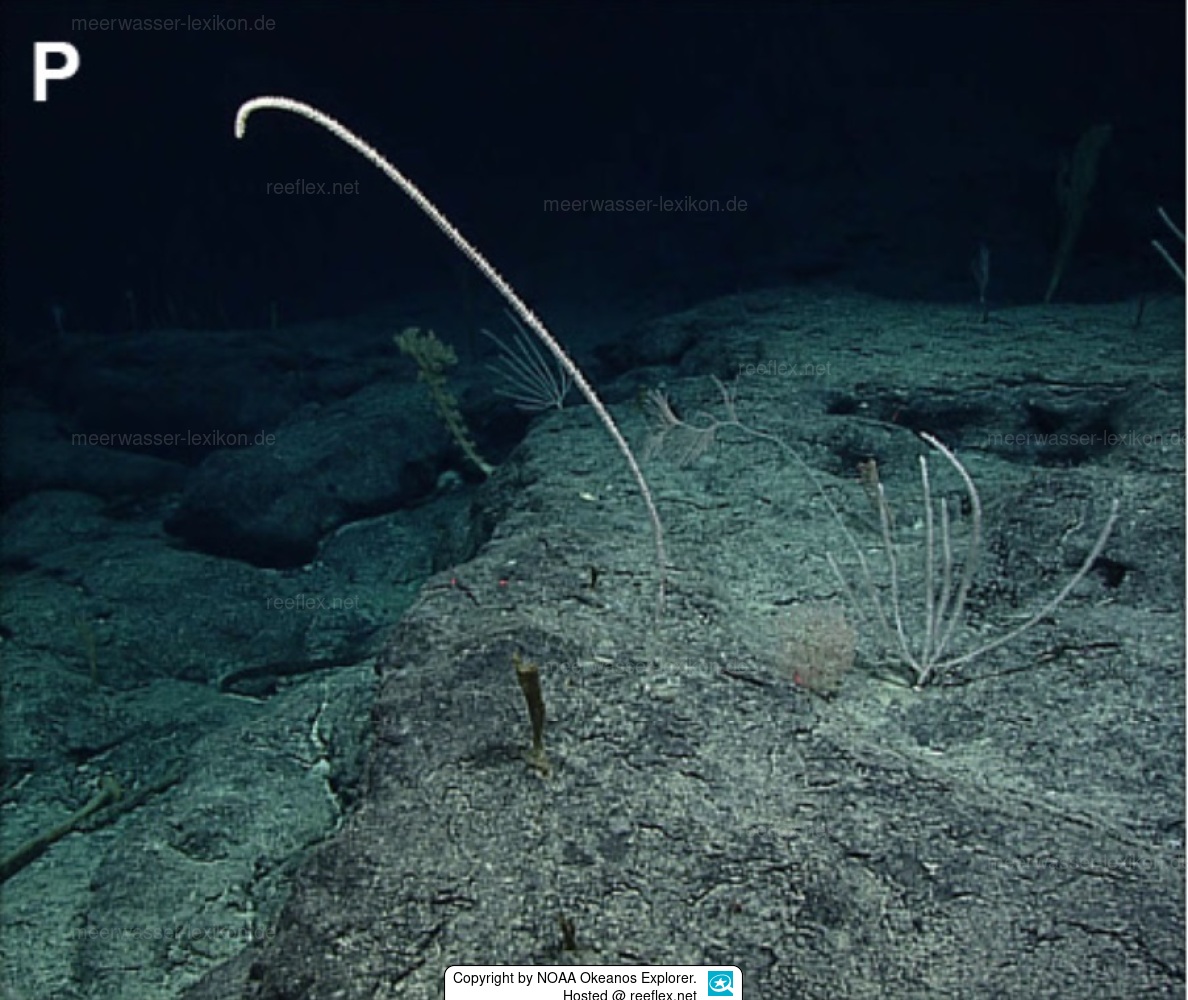Info
The deep-sea gorgonian Narella calamus is known from the following deep-sea mountains: Wetmore Seamount, near Johnston Atoll), an unnamed seamount, northwest of Wake), Necker Ridge (Marcus Necker Ridge) an oceanic marine ridge.
Only two of the 27 known species of Narella, which lack a dorsolateral ridge, have unbranched colonies, the other species being Narella versluysi (Hickson, 1909).
Narella calamus is distinguished from Narella versluysi by a serrated margin on the basal scales and has much longer polyps.
Narella calamus and Narella macrocalyx have the longest polyps in the genus.
The fragility of the corals may be related to depth, as the deep-dwelling corals often have thin scales and thus fragile polyps that are easily damaged during collection.
Only the distal portion of 14.5 cm (27 whorls) of the holotype colony was collected, but in situ photographs of the type show that it was an unbranched colony about 77 cm long.
The color of the colony is white.
Commensalism of polychaete was not observed in this species.
Etymology. The species name "calamus" (Greek for "fishing rod") comes from the fact that the unbranched colony of this species resembles a small fishing rod and is used to catch prey.
Only two of the 27 known species of Narella, which lack a dorsolateral ridge, have unbranched colonies, the other species being Narella versluysi (Hickson, 1909).
Narella calamus is distinguished from Narella versluysi by a serrated margin on the basal scales and has much longer polyps.
Narella calamus and Narella macrocalyx have the longest polyps in the genus.
The fragility of the corals may be related to depth, as the deep-dwelling corals often have thin scales and thus fragile polyps that are easily damaged during collection.
Only the distal portion of 14.5 cm (27 whorls) of the holotype colony was collected, but in situ photographs of the type show that it was an unbranched colony about 77 cm long.
The color of the colony is white.
Commensalism of polychaete was not observed in this species.
Etymology. The species name "calamus" (Greek for "fishing rod") comes from the fact that the unbranched colony of this species resembles a small fishing rod and is used to catch prey.







 NOAA Okeanos Explorer
NOAA Okeanos Explorer
















